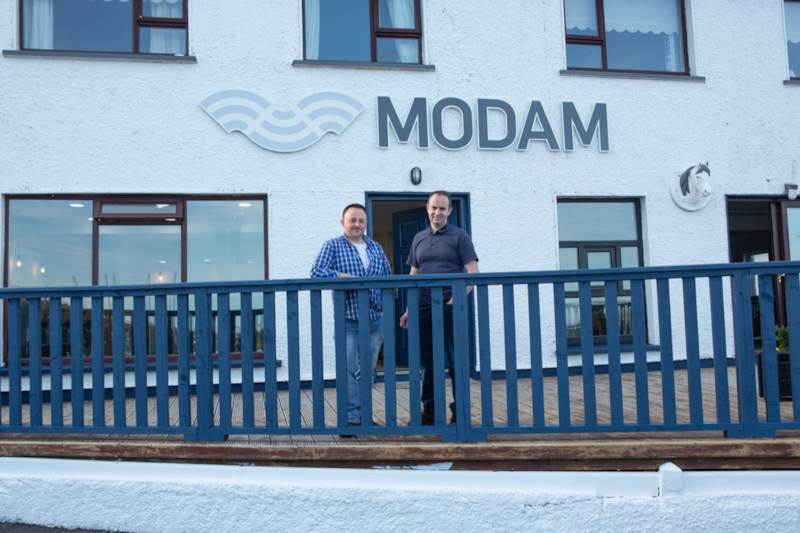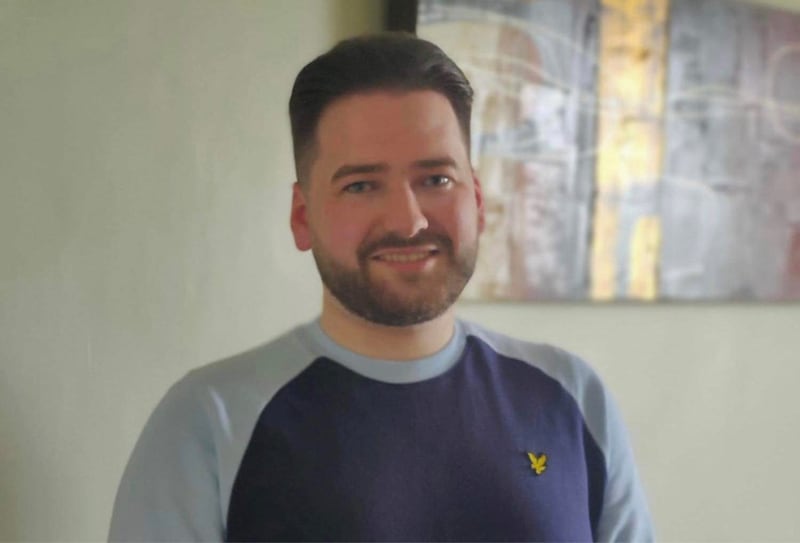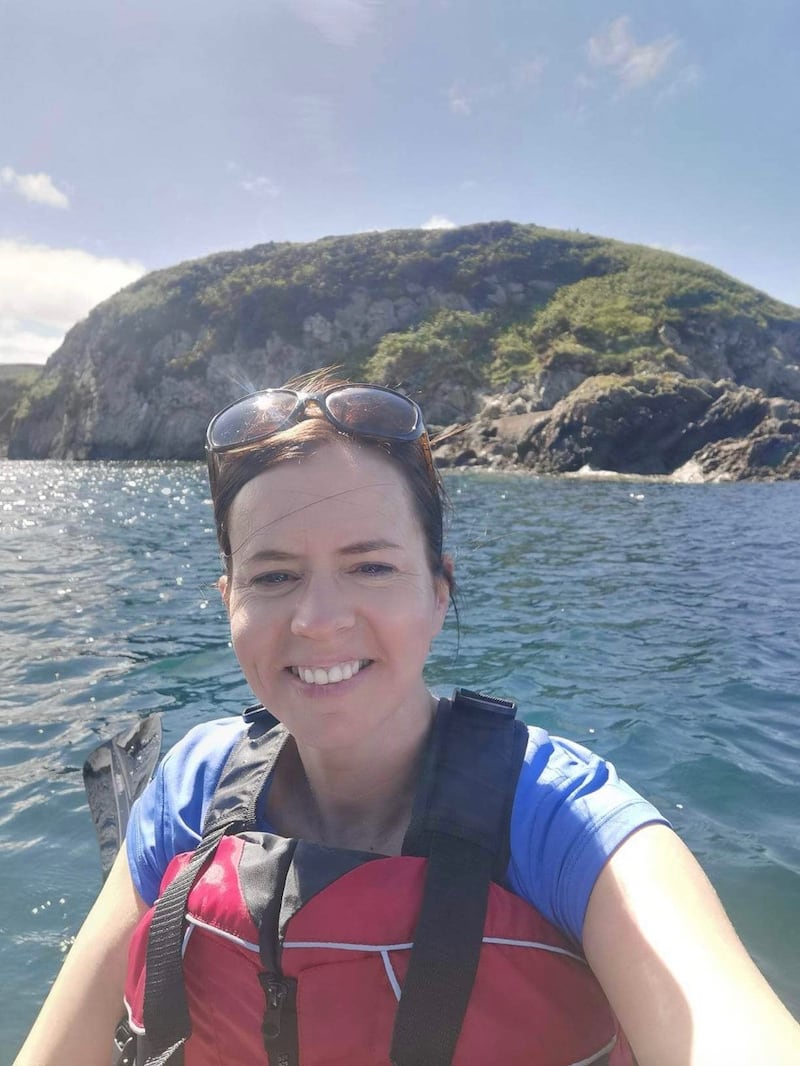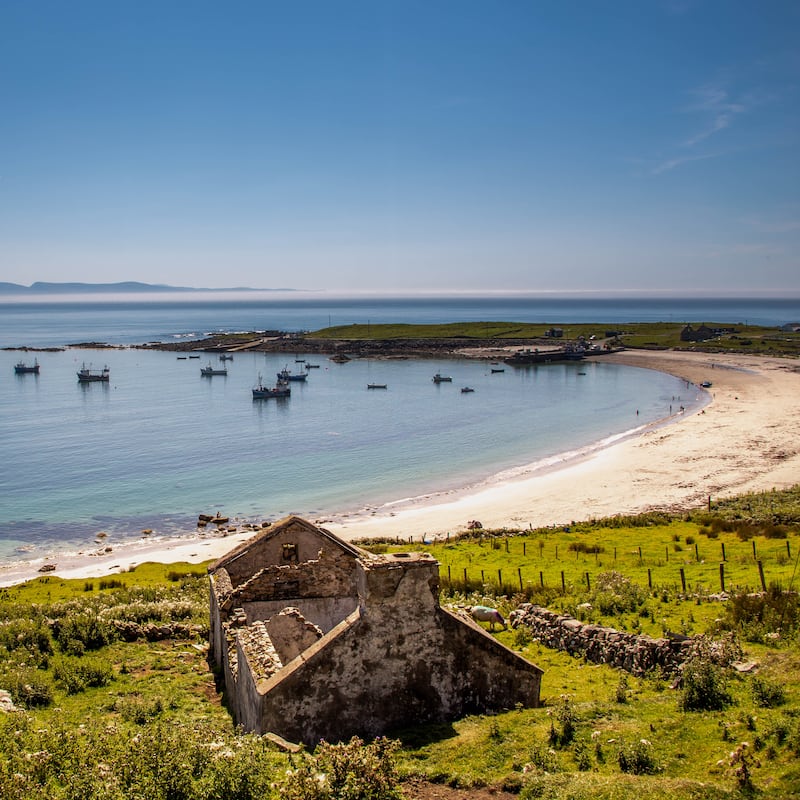It’s a long way from Seattle to the island of Arranmore off the Donegal coast – but the distance is shrinking.
Martin Gallagher used to live and work in the US tech city but in 2015 he and his young family returned to Arranmore in what he calls “a major shift”. There have been no regrets and recent years have seen others make a similar move, back to a place recently dubbed “the world’s most connected island”.
Back in 2019 MODAM – Mol Oifig Digiteach Árainn Mhór – became Ireland’s first offshore digital hub. Located in the same building as a restaurant in the village of Leabgarrow, the landing point for the two ferries that service the island, it was central to mobile operator Three Ireland’s efforts to make Arranmore one of the most connected places on Earth through a point-to-point system which also saw boosted signal sent to the nearby secondary school.
It also meant Arranmore, at least for a time, went viral, with word of the enhanced connectivity featuring on news media around the world.
READ MORE
One global pandemic later, the island began to reel in some of its younger diaspora – and attract some new visitors.

Martin is a telecom’s security analyst and his wife, Aoife, is a practice nurse in the local health clinic, where the connectivity requirements are modest. As for Martin, “I need to remotely connect to systems at client sites around the world and then host and attend meetings with those clients. Having a reliable, stable connection is essential otherwise I couldn’t perform my tasks and host these calls.”
Arranmore, with its population just shy of 500 people, may be an island but the proximity of Carrickfinn Airport, with daily flights to Dublin, means it is not isolated.
For Peadar Rodgers, the penny dropped during the early part of the pandemic. “Just sitting in an apartment up in Dublin – it just made no sense,” he says.
Always “a bit of home bird”, he too moved back to Arranmore, where he works as a senior member of the financial division of global clinical research and biopharmaceutical firm Parexel.

“In my line of work as well I always thought I would be in Dublin and have no other option,” he said. “I have started to appreciate it [Arranmore] a bit more recently – the chance to get out to clear the head, a few minutes from the beach, things you take for granted.”
Many of those who work remotely from Arranmore can do so at home but when required, the hub at MODAM is available day and night. According to Adrian Begley of the Arranmore Business Council, holidaymakers, returning islanders and “digital nomads” mean that during peak months the hub is exceptionally busy – “last summer we were turning people away”.
He fully expects census 2022 data to show a growth in Arranmore’s population. Not that long ago, the future of one of the island’s two primary schools appeared to be in the balance; now it is thriving and a new art building is being constructed on the grounds of the secondary school, to go alongside the revamped seafront, completed last year. An influx of younger people, now able to work from home, has lowered the age profile and recent years have also seen babies born on the island.
It is now estimated that 20 people work remotely on a regular basis and he says with that has come innovation, such as gúrú, a remote mentoring web platform, and Fish With A Story, which would allow fishermen to sell their catch directly via an online marketplace.
Rose Boyle is another islander to have returned home in recent years. Now working as an independent financial consultant, she had spent two decades in Dublin between studying and work when she decided in 2019 it was time to leave the capital.

“I had tried the hub for a week in the summer in 2019, just to see what it was like and that planted the seed then to say I could work from home,” Boyle says.
Boyle says it was “a bit of a gamble” but sees no downsides to the move.
“The commute, cost of living – they are all factors I don’t have to worry about any more.”
Sean Byrne, whose father was born in Leabgarrow and who has been visiting Arranmore “since I was a baby”, has a similar view, outlining how “working remotely allows me to manage my own time and avoid the daily stresses of urban traffic”.
Byrne operates his own company and says: “I own a marketing agency and work with clients to serve their business growth from around the world.
“All I need is a good internet connect that allows me to upload and download content, project manage, do video Zoom calls, email etc.
“Where I am located on the island, I rarely come across connectivity issues, so working remotely from Arranmore is very possible for me.”
Fiona Ni Ghloinn is originally from Carlow but with her parents on Arranmore, she found herself being drawn back to the island, where she now lives with her husband and children. A youth officer covering Arranmore, Tory Island and Gweedore, Ni Ghloinn and her family first came to the island from Dublin when she was on maternity leave. “We were living in Dublin for about 20 years before we moved up here. Our family was expanding and we found Dublin life very, very busy and we wanted to live outside Dublin.”

“It is great to have this internet facility on the island so that when storms hit and there are no boats, you can still access strong reliable broadband to do your job,” she says.
Those on the island council are adamant that the existing point-to-point system was always a staging post and not the destination. Full-fibre broadband connectivity is the aim, although the islands are among thousands of townlands in the queue.
According to National Broadband Ireland (NBI), charged with ensuring that every household in the country has full connectivity, 15 islands have been surveyed and four are completed with premises connected. All are off the Co Donegal coast – Eighter, Eadarinis/Inishcoo, Rutland and Inishfree. NBI said two others are at final handover stage – Inishlyre and Collanmore off the Mayo coast – and two others are under construction – Turbot and Inishturk South off the Galway coast. Two other islands, Heir and Long Island off the west Cork coast, were also scheduled for construction this spring.

Nowadays, when Boyle finishes work, she doesn’t head for the bus – instead she might go kayaking. “I would have had a team call with one of my clients and it was a nice day so I sat outside and had the camera facing the sea, and they said, ‘Oh my God, that’s amazing’.
“It’s moments like that where you think, ‘God, it’s great’.”



















